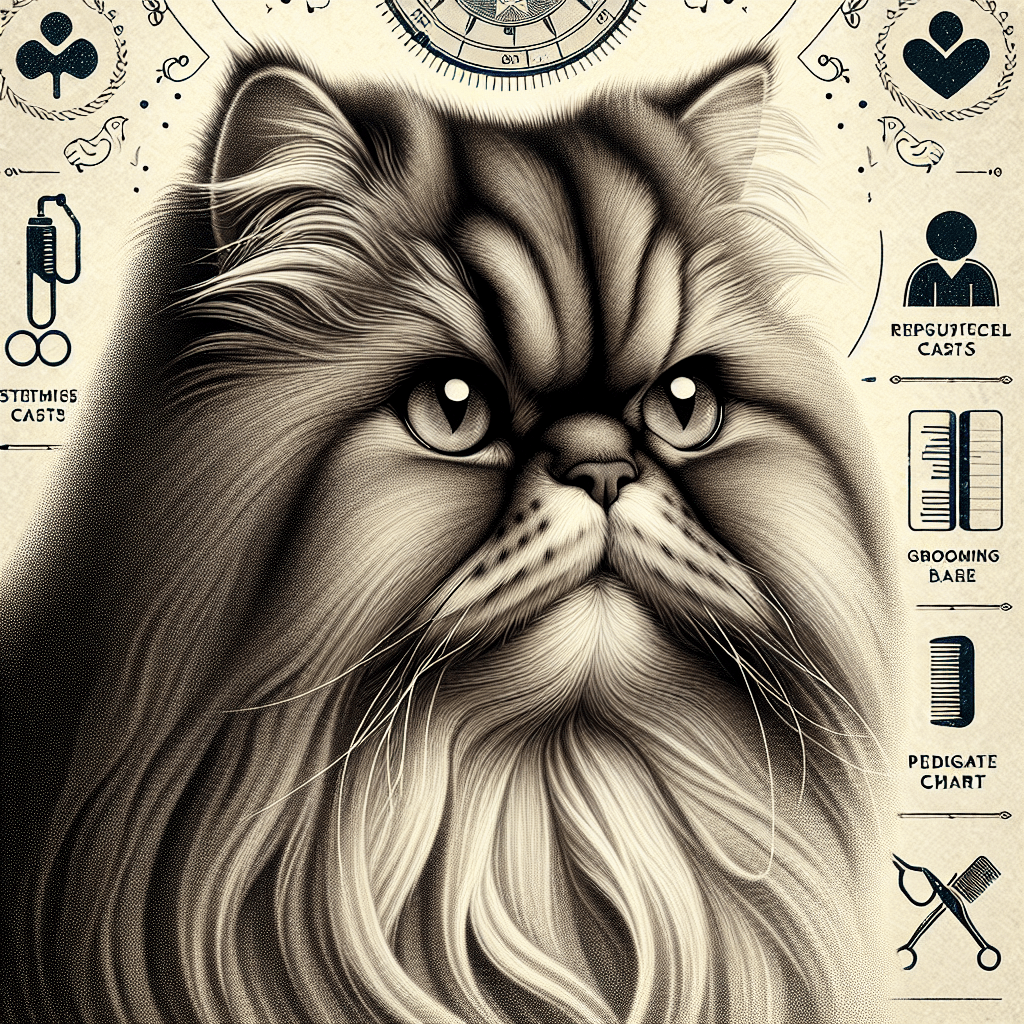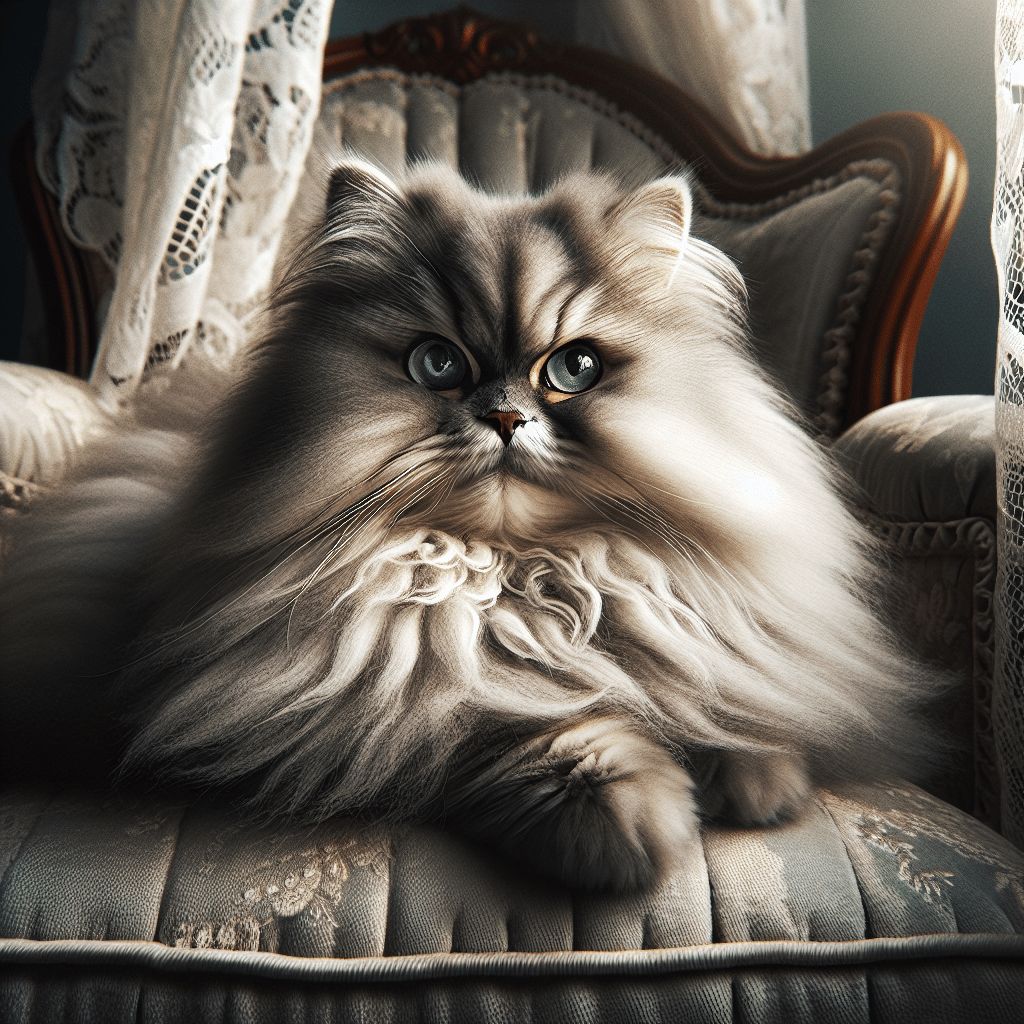So you’re interested in getting a Persian cat as your new furry companion, but you’re curious about how much it might cost you. Well, you’ve come to the right place! In this article, we will shed some light on the intriguing question of the price of a Persian cat. Whether you’re a cat lover or simply exploring the world of feline friends, we’ve got all the information you need to make an informed decision about the financial commitment of bringing home a Persian cat. Let’s get started on this fascinating journey!


Factors Affecting Persian Cat Cost
Breeder Reputation
When considering purchasing a Persian cat, one of the factors that can significantly impact the cost is the reputation of the breeder. Reputable breeders who have years of experience and a proven track record of producing healthy and well-tempered Persian cats may charge a higher price for their kittens. This is because they invest a great deal of time and effort in providing proper care, socialization, and health checks for their cats, ensuring they are of the highest quality. The assurance of a reputable breeder can provide peace of mind knowing that you are getting a Persian cat that has been carefully bred and raised.
Lineage and Pedigree
Another significant factor in determining the cost of a Persian cat is its lineage and pedigree. Persian cats with prestigious lineage and pedigrees from champion bloodlines tend to have a higher price tag. These cats often have a long and distinguished line of ancestors with recognized qualities, such as winning awards or possessing desirable traits. The prestige that comes with a well-documented lineage adds value to the cat, making it highly sought after by dedicated Persian cat enthusiasts and breeders.
Physical Appearance
The physical appearance of a Persian cat can influence its cost. Persian cats with show-quality features, including a dense and luxurious coat, large round eyes, a flat face, and a sturdy body, are generally more expensive than cats with less conforming features. Show-quality Persian cats are often bred with meticulous attention to detail, ensuring that they meet the breed standards set by various cat associations. These cats exude the distinctive charm and elegance that Persian cats are famous for, making them more desirable and, therefore, more costly.
Gender
The gender of a Persian cat can also play a role in its cost. In some cases, male Persian cats tend to be less expensive than females. This is due to the fact that female Persian cats can be used for breeding and have the potential to produce offspring, adding value to their price. However, it is important to note that the cost difference based on gender can vary depending on the breeder and other factors, such as lineage and physical appearance. Ultimately, it is the personal preference of the buyer that determines whether they are willing to pay more for a male or female Persian cat.
Age
The age of a Persian cat can affect its cost. Kittens are usually more expensive than adult Persian cats, as they require more care and attention during their early development stages. Kittens need to be nurtured, socialized, and provided with proper nutrition to ensure their healthy growth. Additionally, the demand for Persian kittens is often higher compared to adult cats, as many people prefer to raise their Persian cats from a young age. However, older Persian cats may also come at a higher price if they have advanced training or unique qualities that make them desirable to potential owners.
Location
The location of the breeder or seller can impact the cost of a Persian cat. In some regions or countries where Persian cats are scarce or in high demand, the prices may be significantly higher compared to areas where Persian cats are more readily available. This can be influenced by factors such as local breeding regulations, import/export fees, and the overall cost of living in that particular area. It is important to consider these regional differences when determining the cost of a Persian cat, as it can vary substantially depending on where you are located.
Initial Acquisition Cost
Purchase Price
The purchase price of a Persian cat can vary greatly depending on the factors discussed above, such as breeder reputation, lineage, physical appearance, gender, age, and location. On average, the price range for a Persian cat can range from a few hundred dollars to several thousand dollars. It is essential to research and compare prices from different breeders to ensure you are getting a fair deal and a healthy Persian cat. Take into consideration the qualities you value most in a Persian cat and how they align with the pricing information provided by various breeders.
Vaccinations and Medical Tests
Alongside the purchase price, it is crucial to consider additional costs related to the initial acquisition of a Persian cat. Vaccinations and medical tests are essential to ensure the well-being and health of your new feline companion. These costs will include vaccinations against common feline diseases, such as rabies and feline distemper, as well as tests for feline leukemia and FIV (feline immunodeficiency virus). These preventive measures are necessary to protect your Persian cat from potential health risks and ensure a long and happy life together.
Transportation Fees
Transportation fees can also contribute to the initial acquisition cost of a Persian cat. If you are purchasing a Persian cat from a breeder located far away from your residence, you may incur expenses related to transporting the cat to your location. This could include costs associated with hiring a professional pet transport service or arranging for the cat to be flown to you. It is important to factor in these transportation fees when budgeting for your Persian cat, as they can vary depending on the distance and the specific arrangements made for the cat’s safe journey.
Ongoing Expenses
Veterinary Care
Ongoing veterinary care is a vital aspect of responsible cat ownership. Persian cats, like any other breed, require regular check-ups, vaccinations, and preventive treatments to maintain their health. Routine veterinary care, such as annual wellness examinations and vaccinations, helps to detect any underlying health issues early and ensures that your Persian cat is receiving the necessary care to live a long and healthy life. The cost of veterinary care can vary depending on your location, the veterinarian chosen, and any additional treatments or medications required.
Grooming
One of the distinctive features of a Persian cat is their luxurious coat. However, this beautiful coat requires regular grooming to keep it healthy and free from mats or tangles. Grooming costs can include professional grooming services, specialized grooming tools, and grooming products such as shampoos and conditioners. Regular brushing, ear cleaning, and nail trimming are also necessary to maintain the overall well-being of a Persian cat. It is important to factor in these grooming expenses when considering the ongoing costs of owning a Persian cat.
Food and Supplements
Providing a nutritious diet is essential for the overall health and well-being of a Persian cat. Good quality cat food that meets the nutritional needs of Persian cats can be more expensive than regular cat food. Persian cats have specific dietary requirements, including a need for high-quality protein, omega-3 fatty acids for coat health, and limited carbohydrates to prevent obesity. In addition to the regular food costs, there may be additional expenses for dietary supplements recommended by your veterinarian to address specific health concerns or support your cat’s overall health.
Litter and Accessories
The cost of litter and accessories is another ongoing expense to consider when owning a Persian cat. Persian cats are known for their cleanliness and preference for a clean litter box. Therefore, investing in good quality litter and litter box maintenance products is essential. The litter expenses can vary depending on the type of litter chosen, such as clumping litter or biodegradable options. Additionally, accessories such as litter boxes, scratching posts, toys, and beds may also be needed to provide a comfortable and stimulating environment for your Persian cat.
Factors Influencing Miscellaneous Costs
Training and Socialization
Training and socialization are factors that can influence the miscellaneous costs associated with owning a Persian cat. While Persian cats are generally known for their calm and gentle disposition, it is still important to provide them with proper training and socialization from a young age. This can involve enrolling your Persian cat in obedience classes or hiring a professional trainer to help with behavioral issues or specific training goals. The cost of training and socialization can vary depending on the level of training required and the expertise of the trainers involved.
Traveling or Boarding
If you are a frequent traveler or need to be away from home for extended periods, the cost of traveling or boarding your Persian cat should be taken into account. Depending on your circumstances, you may need to invest in a pet carrier for safe and comfortable travel or consider boarding services to ensure the well-being of your cat while you are away. These costs can vary depending on the duration of your absence and the quality of the boarding facility or services chosen. It is important to plan for these expenses to provide the best care for your Persian cat even when you are not able to be together.
In conclusion, the cost of owning a Persian cat encompasses various factors that contribute to both the initial acquisition and ongoing expenses. Factors such as breeder reputation, lineage, physical appearance, gender, age, and location can significantly influence the cost of purchasing a Persian cat. Additionally, ongoing expenses, such as veterinary care, grooming, food and supplements, and litter and accessories, should be taken into consideration when budgeting for a Persian cat. Finally, factors like training and socialization, as well as traveling or boarding, can also impact the miscellaneous costs involved in owning a Persian cat. By understanding and accounting for these various factors, you can make an informed decision and provide the best possible care for your furry Persian companion.



